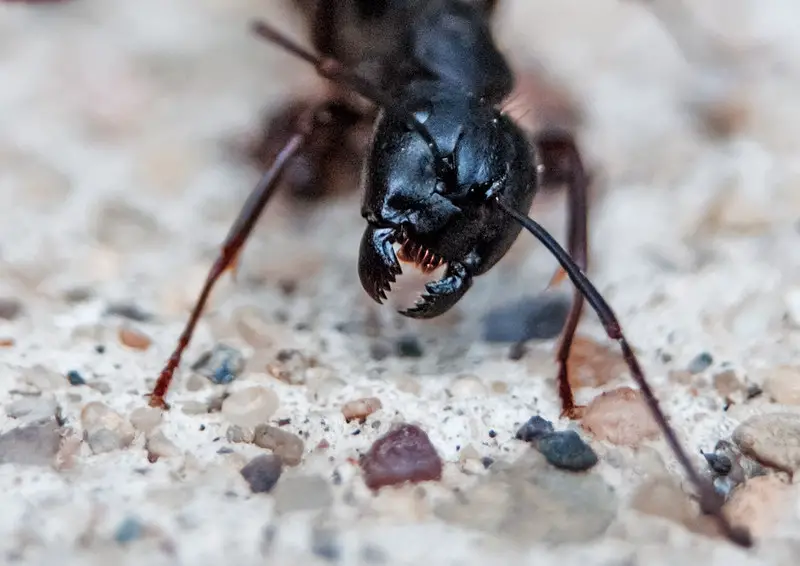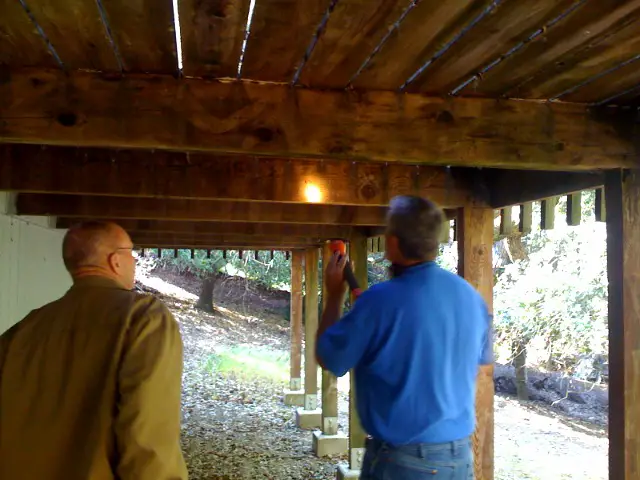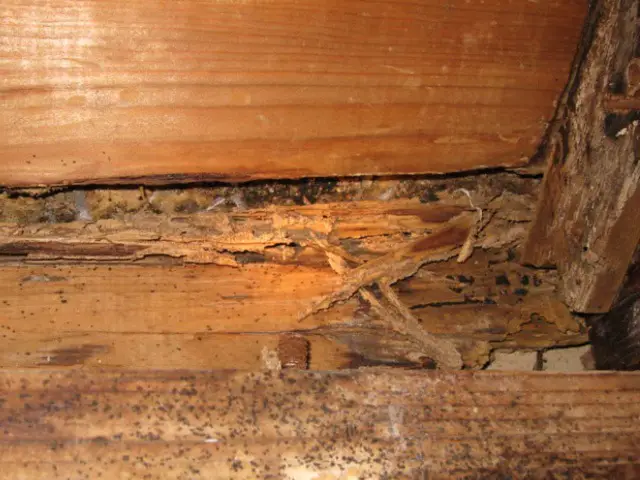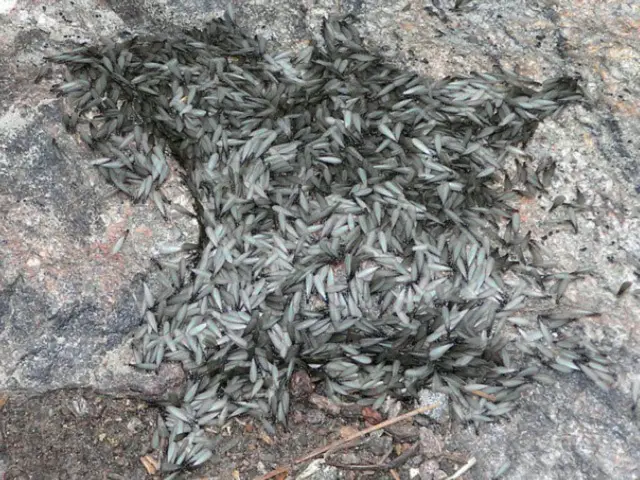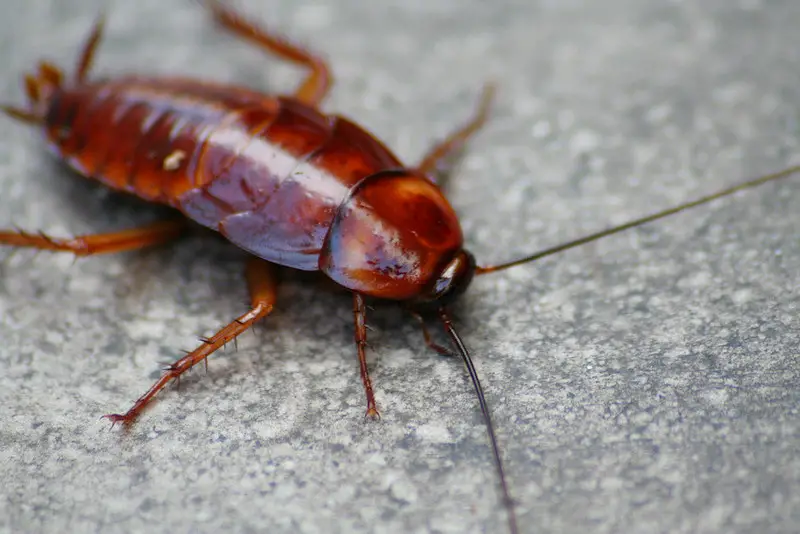Ants are common pests in the yard for a few simple reasons: backyards, especially lawns and gardens, offer natural food sources and shelter for these creatures. They are especially attracted to yards with readily available pet food, leftover foodstuffs, spilled drinks, and trash. So getting rid of ants is mostly a matter of denying them food, water and shelter.
If you want to get rid of ants in the yard, you should keep the outdoor areas of your property free of crumbs, leftover food, and easy water access. Denying what attracts ants to the yard will help you eliminate them. You can spot-treat outside areas with an outdoor insecticide. Granules or liquid insecticides can help you deal with larger ant problems. If you want to spray ants, it’s best to do it late afternoon or early morning, the times of day when ants are the most active.
Why are there so many ants in my yard?
An in your yard can be a nuisance. So, why does my yard have so many ants? Like many other insects, ants are in your yard because they are looking for water, food, and shelter. Since most yards in America have those things, ants are a common problem.
Ants like to move their colonies in dry, sandy soil. Decaying or moist wood also attracts ants to your yard. So if there is honeydew in your yard, ants will know about it. After all, ants need to eat too.
Related posts:
- How To Get Rid Of Ants in California?
- How To Get Rid Of Ants in Texas?
- How To Get Rid Of Ants in Florida?
- How To Get Rid Of Ants in New York?
- How To Get Rid Of Ants In Pennsylvania?
- How To Get Rid Of Ants In Illinois?
- How To Get Rid Of Ants In Ohio?
- How To Get Rid Of Ants In Georgia?
- How To Get Rid Of Ants In North Carolina?
- How To Get Rid Of Ants In Michigan?
- Do Sugar Ants Bite?
The following things may attract ants to your yard:
- Water – Ants in the yard get thirsty too. They require a steady supply of water to drink on the spot and to carry it back to the colony. That’s because ants store water inside the colony for later use. That’s why you should check your outdoor plumbing and water sources for ants. If you have ants in the yard, you’ll find them near water.
- Trash – Ants thrive on trash. And the more of it you leave outside, the more ants there will be in the yard. Clean up trash and debris quickly to keep ants out of your yard.
- Food – Yes, that means leftovers. Ants will eat anything and everything people eat. So, if you didn’t do a good job cleaning up after a party in your yard, ants are ready to take over. Ants especially like leftover food with sugar like spilled soda, juices, coffee. But they don’t shy away from cookies, fruit, candy, or even baked goods.
How do you get rid of an ant infestation in your yard?
Because there are so many living things in your yard, it’s best to avoid heavy-duty pest control chemicals if you want to get rid of ants in the yard.
You can try a three percent dish soap solution to get rid of ants. All you need to do is mix water with a bit of soap and spray the ant-infested areas in the yard.
Other possible treatments include sugar water and borax or diatomaceous earth DIY bug spray. Unless the ant infestation is completely out of hand, the best solution is to live with these valuable insects. Unlike cockroaches, ants are beneficial in the yard. Most ants consume the larvae of pests in the yard. Ants forage amongst the roots of the grass and other plants. This is a win-win for the homeowner.
If you live in a house, you probably have ants in the yard. Unfortunately, ants can be everywhere in your yard. The problem starts when ants start to take over your yard and your things in it. When that happens, it’s time to get rid of ants in the yard.
If you have one of the huge ant colonies entrenched in your lawn, you might want to take steps to get rid of them. But, killing ants in your yard is not as simple as it looks. Maybe children or pets are playing in the same yard where you have an ant problem.
With winter brings a host of pest problems for U.S. residents. Unfortunately, your family members aren’t the only ones happy you finally turned on your heat this month. As the colder months are upon us, many ants, rodents, bugs, pests, and other vermin have quickly found their way into the warmth of homes. Have you already fallen victim to winter pests in your home?
Here are three of the most common winter pests in the U.S., along with simple signs of pest invasion to look out for.
How do I get rid of ants in my lawn without killing the grass?
You can get rid of ants on your lawn without killing the grass. A simple soap and water solution will not harm the grass, but it will get rid of the ants. Make a simple ant control mixture by mixing five tablespoons of baking soda and a couple of tablespoons of liquid soap in one gallon of tap water.
This simple solution will not hurt your grass or other plants, but it will get rid of ants in the yard. Once you have found the ants, pour the soap and baking soda mixture on the anthill.
How to get rid of ants in your home?
There are several different types of ants found in the United States. But the type you’ll want to look out for this winter: Carpenter ants! Carpenter ants, while seemingly harmless to humans, can create severe damage to your home. Carpenter ants in the United States typically hibernate during the winter – so if you spot them in your house now, there is a high chance that an infestation has already occurred. The warmth of your home can keep ants from hibernating, and their activity can be detrimental. Homeowners in America should pay special attention to the following signs of carpenter ants:
- Big, black ants
- Smaller ants with wings
- Tiny piles of sawdust near wooden structures of walls
- Rustling sounds
- Rotted, soft, or collapsed wood
If you notice any of the above listed in your home or suspect a carpenter ant invasion, we recommend having a calling a specialist immediately. A pest control specialist will be able to assess your pest problem and suggest the best solution. Carpenter ants are tough and a very common winter pest in America. Do not hesitate to contact a pest control company near your home for an environmentally friendly solution to your ant infestation this winter!
How to get rid of cockroaches?
All pests are annoying – but German cockroaches have to be one of the most unsettling to experience for any homeowner. They seek shelter inside your home during winter, mostly in warm-humid places like your kitchen and bathrooms. Cockroaches are pantry pests that forage for food, so we always recommend keeping a clean kitchen to prevent them at any time of year. They can be extremely dangerous due to the large number of viruses, bacteria, and parasites they carry with them into your home. Typically, when you physically see a cockroach, you know you have a problem. Also, look out for the following signs of cockroach infestation in your home:
- Cockroach feces – you can typically spot these behind the stove, refrigerator, or anywhere you store your food.
- Oothecae (Cockroach egg cases) – Oothecae are brown casings that hold many cockroach eggs. After they hatch, the oothecae are left behind, leaving you proof that you have a cockroach problem.
- Pungent, musty odor – German cockroaches produce an oily smell as an infestation grows.
If you suspect cockroach infestation, you should have your home inspected immediately. Like we mentioned before, they carry a host of diseases that can easily spread through your home and to your family. This is the last thing you’ll want to deal with during this holiday season! If you’re looking for an environmentally friendly solution to your cockroach problem this winter, contact an exterminator.
How to get rid of rodents?
The most common rodents in the United States are mice, rats, chipmunks, and squirrels. Some of us find them cute – but we can assure you that every homeowner we’ve talked to thinks the complete opposite. Rodents are a common pest problem in the U.S. and North America –, especially during the winter season. They are simply looking for shelter during these colder months, and they find it in the warmth of your heated home or workplace.
Related post: How to keep squirrels off the roof?
Rodents can be extremely dangerous, for they carry serious diseases and parasites with them. They can pass these diseases throughout your home and contaminate your food. Consider the following signs of a rodent infestation in your house:
- Brown or black “pellets” in cabinets, cupboards, and bathrooms
- Coarse hair near holes or cracks in your walls
- Claw or teeth marks on food containers and throughout the kitchen
Unfortunately, many homeowners don’t know they have a rodent infestation until they physically see one running through their house.
